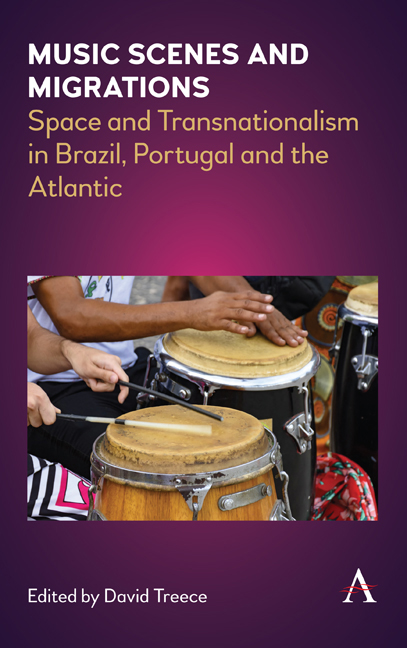Book contents
- Frontmatter
- Contents
- List of Illustrations
- Acknowledgements
- Introduction
- Part 1 Colonial and Postcolonial Transnationalisms, Migrations and Diasporas
- Part 2 Relocating Rio de Janeiro
- Part 3 Demetropolitanizing the Musical City: Other Scenes, Industries, Technologies
- Notes on Contributors
- Notes
- References
- Index
Chapter 2 - Lundus, Street Organs, Music Boxes and the‘Cachucha’: Early Nineteenth-Century TransatlanticCrossings between Europe and Rio de Janeiro
Published online by Cambridge University Press: 20 January 2022
- Frontmatter
- Contents
- List of Illustrations
- Acknowledgements
- Introduction
- Part 1 Colonial and Postcolonial Transnationalisms, Migrations and Diasporas
- Part 2 Relocating Rio de Janeiro
- Part 3 Demetropolitanizing the Musical City: Other Scenes, Industries, Technologies
- Notes on Contributors
- Notes
- References
- Index
Summary
Introduction: from ‘Noise’ to Music
When we talk about mechanical recording and soundreproduction we tend to think of thewax-cylinder-playing phonographs invented by ThomasEdison (1847– 1931) in 1877 or the flat-disc-playinggramophones created 10 years later by Emile Berliner(1851–1929). Yet, at least forty years before theexistence of these ‘talking machines’, an excerptfrom a tune heard on a less valued and chronicledmedium – the street organ – found its way into afamous Afro-Brazilian lundu song composition ‘Lá no largo daSé’ (There on the Cathedral Square), which is anextraordinary part of the story I am about totell.
The song was composed in 1837–38, with lyrics by Manuelde Araújo Porto-Alegre (1806–79), a man of lettersand a key figure in the Brazilian Historical andGeographical Institute, and music by Cândido Inácioda Silva (1800–1838), a singer, violinist andcomposer active in the theatres of Rio de Janeiro.The tune recorded on street organs and music boxesof the time and incorporated into ‘Lá no largo daSé’ was known in Brazil as ‘Maria Cachucha’, asatirical Portuguese song. The lundu and the cachucha were also dances enacted intheatrical performances in early nineteenth-centuryRio de Janeiro. What is remarkable about thecachucha is that it seems to be confined to a singletune in all of the different contexts where itappears. But this is the outcome of a longinvestigation, described below, for it took me morethan a decade to find and provide consistentdocumentation about that mechanical audiletransmission.
From the perspective of musicology, listening is themain tool for knowledge production in musicresearch. When the research object is the music ofthe past, we are dealing with a chain of successivereceptions to which the musicologist seeks tolisten, while exercising a kind of effort that LeoTreitler has called ‘historical imagination’, thatis, exploring evidence of ‘presentification’ – musicis always heard in the present – inscribed in the(usually written) registers to which one has access.For Treitler, ‘the meaningfulness of music throughall its presents, from the moment of its creation tothe historian's present, is the content ofhistorical thought about it. And the presence ofmusic in the historian's consciousness is thecondition under which such thought can take place’(Treitler 1989, 1). That is, the music historianmust ‘listen’ in the present, recreating themateriality of the sound, in order to understand andtalk about the music of the past. Additionally,these receptions also mean a chain of listeningpractices or ‘audile technique’ (Sterne 2003), whichhas historically mediated what is music or noise. Inthe case of Rio de Janeiro in the first half of thenineteenth century, for example, the sound of thestreet organ was received much more as noise or acuriosity than as music.
My hypothesis is that new listenings can be carried outon the basis of an ‘acoustically tuned’investigation (Ochoa Gautier 2014), not only fromcanonized historical narratives, but also fromvisits to primary sources. This is a type of studythat can require a detective's approach (assuggested by Umberto Eco), bringing togetherscattered fragments of evidence, an effort that theItalian historian Carlo Ginzburg (1989) identifiedas an ‘evidential paradigm’.
- Type
- Chapter
- Information
- Music Scenes and MigrationsSpace and Transnationalism in Brazil, Portugal and the Atlantic, pp. 21 - 30Publisher: Anthem PressPrint publication year: 2020



